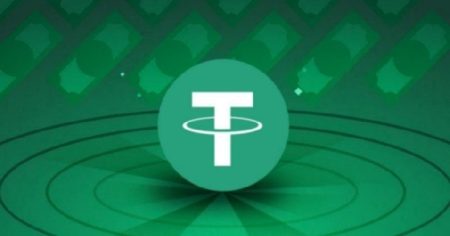Mega Matrix Files $2 Billion Shelf Registration to Build Digital Asset Treasury Focused on Ethena’s ENA Token
NYSE-Listed Firm Pioneers New Approach to Crypto Treasury Strategy Amid Market Evolution
In a significant move that signals the continued evolution of corporate cryptocurrency strategies, NYSE-listed firm Mega Matrix (MPU) submitted a $2 billion shelf registration with the Securities and Exchange Commission on Thursday. The filing outlines the company’s ambitious plans to establish a digital asset treasury centered specifically around ENA, the governance token that powers the rapidly growing Ethena stablecoin protocol.
This strategic pivot represents a notable development in the corporate adoption of cryptocurrency assets, as Mega Matrix aims to position itself as the first publicly traded company to anchor its digital treasury in stablecoin governance tokens rather than more established cryptocurrencies like Bitcoin or Ethereum. According to the SEC filing, the company could potentially sell up to $2 billion in securities, with proceeds earmarked specifically for building its cryptocurrency holdings. This specialized approach focuses on the governance infrastructure behind stablecoins rather than the stablecoins themselves, potentially offering a different risk-reward profile compared to traditional cryptocurrency treasury strategies.
“By focusing on governance tokens like ENA, we’re taking a fundamentally different approach to building our digital asset treasury,” explained a Mega Matrix representative. “We believe the governance layer of successful protocols offers unique value that complements more traditional cryptocurrency holdings.” Despite this optimistic outlook, market reaction has been measured, with the company’s stock initially declining as much as 6% following the announcement before partially recovering. The shares remain down nearly 30% since August 25, when the firm first disclosed its intentions to pivot toward digital assets – suggesting investor skepticism about this strategic redirection.
Understanding Ethena and the ENA Token’s Strategic Significance
Ethena has rapidly emerged as a significant player in the decentralized finance ecosystem, developing the USDe “digital dollar” that has already accumulated over $12 billion in market capitalization. The protocol employs an innovative financial mechanism to maintain its stablecoin’s $1 peg while simultaneously generating yield for holders. This is accomplished through a delta-neutral strategy that combines holding spot cryptocurrencies like Bitcoin (currently trading around $108,783) and Ethereum while simultaneously shorting an equivalent amount of derivatives contracts.
What makes the ENA token particularly attractive as a treasury asset is its relationship to the protocol’s revenue streams. Once fully activated, ENA token holders stand to benefit from protocol revenues generated through Ethena’s operations. This potential for passive income generation adds another dimension to Mega Matrix’s treasury strategy beyond simple asset appreciation. The company appears to be betting on both the growth of the Ethena ecosystem and the value accrual mechanism built into the ENA token governance structure.
Mega Matrix isn’t alone in recognizing this opportunity. In July, a newly formed entity called StablecoinX announced similar intentions to go public through a SPAC merger with the explicit purpose of building an ENA-focused treasury. That deal reportedly aims to close by year-end, potentially creating competition among public companies seeking exposure to this specific governance token. This emerging trend suggests growing institutional interest in the governance layer of decentralized finance, particularly around protocols managing significant stablecoin ecosystems.
The Evolution and Potential Peaking of the Digital Asset Treasury Trend
Digital Asset Treasury firms (DATs) have experienced a remarkable surge in popularity on Wall Street over the past few years. These companies essentially function as publicly-traded vehicles that raise capital through traditional markets and deploy those funds into cryptocurrency assets. The strategy was pioneered by MicroStrategy (MSTR), which under CEO Michael Saylor’s direction has accumulated the largest corporate Bitcoin holdings in the world, currently valued at billions of dollars.
What began with Bitcoin has now expanded to include a wider array of digital assets, with newer entrants increasingly focusing on smaller, more specialized tokens like ENA. This evolution reflects both the maturing cryptocurrency ecosystem and the search for potentially higher returns beyond the largest cryptocurrencies. Companies following this model effectively offer traditional investors a regulated pathway to gain exposure to digital assets without directly holding cryptocurrencies themselves.
However, recent market performance suggests this trend may have already peaked. Several digital asset treasury stocks have plummeted 70-80% in recent months, with some now trading below the net asset value of their cryptocurrency holdings. This disconnect highlights growing investor concerns about the sustainability of the DAT model, regulatory uncertainties, and questions about long-term value creation beyond simple asset accumulation. Nasdaq has reportedly increased scrutiny of companies pursuing this strategy, adding another layer of complexity to firms like Mega Matrix attempting to execute on this business model.
Market Implications and Investor Considerations
The timing of Mega Matrix’s strategic shift comes during a period of significant volatility in both cryptocurrency markets and digital asset treasury stocks. The company’s decision to focus specifically on ENA rather than more established cryptocurrencies represents both an opportunity and substantial risk. While governance tokens can potentially provide additional yield mechanisms beyond price appreciation, they typically exhibit higher volatility and liquidity challenges compared to larger cryptocurrencies.
“Investors should carefully evaluate the fundamental differences between various digital asset treasury strategies,” noted cryptocurrency analyst Sarah Johnson. “Companies focusing on governance tokens are taking on different risk profiles compared to those holding Bitcoin or Ethereum. These tokens are not only more volatile but also more closely tied to the success of specific protocols rather than the broader cryptocurrency ecosystem.”
For potential investors, Mega Matrix now presents a complex value proposition that combines traditional equity considerations with exposure to a specific segment of the cryptocurrency market. The shelf registration allows the company to raise capital over time rather than all at once, potentially enabling them to adjust their fundraising strategy based on market conditions and investor appetite. As with any company undergoing a significant strategic pivot, questions remain about execution capability, risk management frameworks, and the board’s expertise in cryptocurrency markets.
Regulatory Environment and Future Outlook for Digital Asset Treasuries
As digital asset treasury companies continue to evolve their strategies, the regulatory landscape remains a critical consideration. The SEC has maintained significant scrutiny over cryptocurrency-related businesses, with ongoing debates about token classifications, disclosure requirements, and investor protections. Mega Matrix’s shelf registration represents a step toward regulatory compliance, but doesn’t eliminate potential future regulatory challenges as the company builds its ENA holdings.
Looking ahead, the success of Mega Matrix’s strategy will likely depend on several factors: the continued growth and adoption of the Ethena protocol, the value accrual mechanisms of the ENA token, broader cryptocurrency market conditions, and the company’s ability to effectively communicate its value proposition to traditional investors. The decline in many digital asset treasury stocks suggests that investor enthusiasm has cooled significantly, potentially creating headwinds for new entrants like Mega Matrix pursuing specialized strategies.
For the broader financial ecosystem, this development highlights the ongoing convergence between traditional finance and decentralized technologies. Whether Mega Matrix succeeds in its ambitious pivot or joins other struggling digital asset treasury companies, its $2 billion shelf registration marks another significant step in the institutional exploration of cryptocurrency markets. As the dust settles on the initial wave of corporate cryptocurrency adoption, companies with more specialized, thoughtful approaches to digital asset integration may ultimately prove more sustainable than those simply accumulating tokens without clear strategic frameworks or value creation mechanisms beyond speculation.















